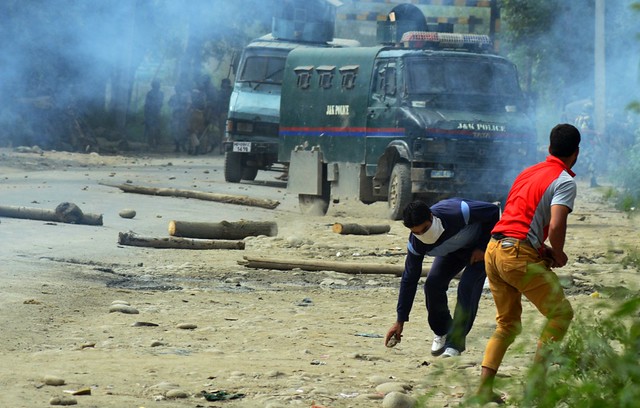By Arshi Javaid for Twocircles.net,
Burhan Wani, a commander of Kashmiri militant group Hizbul Mujahideen, was killed in an encounter on July 8, 2016, which was the third day of Eid. As the news of Burhan’s death spread, social media, his favourite medium of communication, started reverberating with pictures of the slain militant. A smile on the face, bullet pumped to his chest and blood-soaked body was how Kashmiris saw Burhan for the last time. Immediately after his killing, curfew was imposed and mobile internet services were blocked in the entire Valley, leaving a huge information void about what is happening in Kashmir.
As the mainstream media was celebrating the victory of Burhan’s killing, it was yet another collective assault on Kashmiris. A festering wound had been opened once again. The turnout in the 2014 Assembly elections was quite indicative of how a common Kashmiri looked forward to some kind of dignified settlement to the conflict. But given the outpouring of grief and outrage following Burhan’s killing, it is clear that Kashmir has erupted again.
This was evident in the scores of people who turned up at Burhan’s funeral and the subsequent protests which are continuing across the Valley in defiance of the curfew. As of Sunday night, 23 people had been killed during the protests.
Watching the “mainstream” media, the question arises – how did Burhan become a thorn in India’s collective conscience? Although extremely popular, Burhan was not the first homegrown militant in Kashmir. He represented a constituency of militants who are educated but surely he wasn’t the first among them. Then how did Burhan become the symbol of terror for an average Indian who does not understand Kashmir, leave alone the issue of homegrown militancy or why educated youngsters were picking up guns?
Part of the reason is the media projection Burhan received. Popular news anchors, who hold sway over the minds and hearts of Indian audiences, held hour-long prime time programmes on the ‘Burhan phenomenon’. Now for someone who does not understand the nuances of Kashmir, Burhan’s face became another hate figure after Afzal Guru. For a nation which worships its armed forces, seeing a projected terrorist dressed in military fatigues is nothing less than blasphemy. Burhan became a matter of prestige for the armed forces and he had to be hunted down at any cost.
TRP-driven frenzy followed and soon every channel did a feature on Burhan. The horrible sound effects soon left no stone unturned to make the Burhan look like an ‘ISIS-in-our-own-backyard’ terrorist. While one cannot have any grudges against doctored-video playing channels or vocal wrestling rings; how did the liberal English media not understand Burhan’s popularity within Kashmir? How did they fail to see that demonising him would only widen the chasm between India and Kashmir?
Can we absolve these opinion makers of their responsibility over how their actions yielded reactions, denting the Kashmiri psyche individually and collectively? Burhan was on a path in which he would not have lived for long, but his death was made into a gladiatorial battle that was enjoyed publicly. Given what Burhan meant to an average Kashmiri, they wouldn’t watch this rejoicing silently.
The whole Burhan vortex could also be seen as how for certain journalists, who claim to have a specialisation on Kashmir, drying up of the conflict would mean a death knell to their careers. Stories such as farmer deaths in Maharashtra and favours to Adani cannot be sensationalised beyond a point because it would stretch the audience’s thinking in a way that would be detrimental to the interests of corporate media houses.
Kashmir is a region where interests of the state, corporate media and and the tourism industry converge. So all sorts of insensitivities can be meted out on Kashmiris, and the Kashmir pot will be kept boiling. The Kashmir conflict has been reopened for all the unemployed experts and conflict connoisseurs to rake it in. But winning Kashmiri hearts, let’s forget about that.
(The author is a PhD student at JNU, Delhi)


